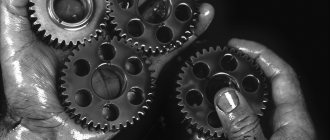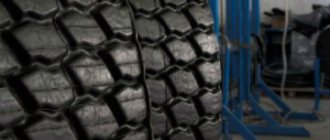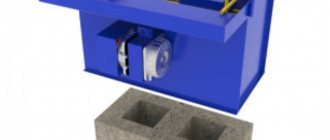The operation of any production equipment is accompanied by natural processes of deterioration of its operational characteristics, changes in the properties of parts and assemblies. However, when accumulated, they can lead to serious damage or a complete stop of the machines.
To avoid the negative economic consequences associated with equipment downtime during repairs, enterprises organize a wear-out management process and promptly update their technical assets.
What is wear and what types of this process are known? What are the ways to slow down the destruction of parts, extend the service life and energy efficiency of machines? We will answer these and other questions further.
Definition and types of wear
Wear (aging) is a gradual decrease in the performance characteristics of products, components or equipment as a whole as a result of changes in shape, size or physical and chemical properties of parts.
Negative changes are cumulative. As the operating time of parts increases, their wear increases continuously, but with varying intensity. For example, during the running-in process of surfaces, their wear, as a rule, increases quickly. After running-in, it slows down, but then grows again, reaching maximum values. Further use of the parts is unacceptable to avoid their complete destruction.
Aging is accelerated by friction, static, pulsed or periodic mechanical loads, and extreme temperature conditions.
Depending on the nature of external influences on the materials of the product, the following types of wear are distinguished:
- Abrasive
- Fretting
- Corrosive
- Oxidative
- Thermal
- Cavitation
- Fatigue
Let's take a closer look at the different types of aging.
Abrasive wear
It consists in the destruction of the surface layer of a part during contact with solid particles of various natures.
This type of wear is typical for mechanisms operating in conditions of increased dust: mining equipment, transport, road construction and agricultural machinery, equipment used in construction and the production of building materials.
One of the types of abrasive aging is gas abrasive wear. It differs in the way solid abrasive particles move in a gas flow. As a result, the surface material crumbles, shears, or is otherwise deformed.
Gas abrasive wear is typical for pneumatic pipelines, fan blades and pumps for pumping contaminated gases, blast furnace units, and components of solid fuel turbojet engines.
Often, gas abrasive effects are aggravated by high temperatures and plasma flows.
In the event that the role of abrasive carrier is not played by a gaseous medium, but by a liquid flow, we should talk about water-abrasive wear. Hydraulic transport systems, hydroelectric power station turbine units, components of washing equipment, and various mining equipment are subject to its destructive effects.
Sometimes waterjet processes are aggravated by exposure to an aggressive liquid environment.
Fretting wear
Fretting is a phenomenon of microfracture of parts that are in close contact with each other under conditions of low-amplitude vibrations (from hundredths of a micron). This type of wear is typical for rivets, threaded and splined joints, keys and pins connecting parts of mechanisms.
As fretting aging increases and metal particles peel off, the latter act as an abrasive, aggravating the wear process.
Adhesive wear
With prolonged friction, accompanied by plastic deformations of the contacting surfaces, periodic bringing together of the areas allows the forces of interatomic interaction to manifest themselves. In other words, the interpenetration of atoms of the substance of one part into the crystalline structures of another begins.
Repeated occurrence and interruption of adhesive bonds leads to the separation of surface zones from parts. Highly loaded friction pairs are subject to adhesive aging: bearings, shafts, axles, sliding bearings.
Fretting and adhesive wear can be resisted by using special “dry lubricants” for friction pairs, which form a non-stick protective layer on the surfaces. It separates the mating bases, preventing their contact, the formation of scuffing and seizing.
Dry lubrication technology has long been adopted by foreign manufacturers of lubricants. In Russia it gained popularity relatively recently - with the advent of competitive domestic coatings MODENGY
These coatings consist of a binder resin, solvent, fine particles of solid lubricants and functional additives.
On the surfaces of parts they form a thin composite layer with high protective and lubricating properties. It reduces and stabilizes friction, prevents metal corrosion, and prevents the adhesion of abrasives.
Solid lubricating particles fill the depressions of surface microroughness, increasing its supporting area and load-bearing capacity.
Due to the high compression resistance and low shear resistance, the dry friction coefficient reaches values of several hundredths at contact pressures commensurate with the yield strength of the base material.
MODENGY anti-friction solid lubricant coatings have high extreme pressure properties and a load-bearing capacity of up to 2500 MPa, operate at temperatures up to +600 °C, and are resistant to chemically aggressive environments - acids, alkalis, organic solvents, etc.
ATSP have not only anti-friction, but also anti-corrosion properties; the thickness of the coating layer on the part is adjustable from 5 to 30 microns, which has little effect on the original dimensional accuracy of the part.
Corrosive wear
Corrosion is the process (or the result of a process) of destruction of metals during their chemical, electrochemical or biological interaction with the environment.
This type of wear accompanies the operation of parts made of ferrous metals (mainly steel), and accelerates with increasing humidity and aggressiveness of external conditions.
Corrosion can also occur on metals such as copper and aluminum, but in this case it does not cause wear, but leads to a decrease in electrical conductivity (which activates the oxidation process and contributes to the development of electrical erosion).
Oxidative wear
As a result of the interaction of the material with oxygen or an oxidizing environment, protective films are formed on the friction surfaces. The process of the appearance and destruction of these films is constantly repeated, accompanied by normal or elevated temperatures, and takes place in the absence of a lubricant or in its insufficient quantity.
Oxidative wear occurs due to sliding friction and rolling friction. In the first case, it becomes leading, in the second - accompanying other types of wear.
Thermal wear
The thermal type of aging consists of the destruction of the surface layer of a material or a change in the properties of its deep layers under the influence of heating structural elements to the plasticity temperature.
This type of wear is typical for highly loaded components of heavy equipment, rolls of rolling mills, hot stamping machines and other units.
Cavitation wear
Pressure drops in the liquid flow flowing around the structure lead to the formation of gas bubbles in the zone of relative rarefaction, which subsequently undergo explosive collapse to form a shock wave.
This wave is the main active factor in cavitation destruction of surfaces. Such destruction occurs on the propellers of large and small ships, in hydraulic turbines and technological equipment. Aggressive working environments with abrasive suspensions can complicate the situation.
Fatigue wear
Associated with fatigue of metal experiencing variable or static mechanical loads. Shear stresses lead to the appearance of cracks in parts and a general decrease in the strength of the material.
Cracks in the near-surface layer grow, merge and intersect with each other. This leads to erosion of small scale-like fragments, and over time can cause the destruction of the part.
Fatigue wear is most typical for components of transport systems, rails, wheel sets, mining machines, building structures, etc.
Why does technology become obsolete?
In one form or another, from explicit to implicit, planned obsolescence continues to delight us today. From durability with a catch where replacing fragile parts costs more than replacing the product entirely, to aesthetic enhancements that make older versions of a product less stylish, good manufacturers always have a trick up their sleeve that allows them to regularly visit customers' wallets.
To make it completely clear, let's look at smartphones. These devices are often thrown away after being used for several years. Screens or buttons break, batteries die, operating systems and applications stop being supported and updated. The solution is always at hand: brand new phone models that are released every year and are claimed to be “the best.”
Push-button phones are no longer useful these days.
Slade cites printer cartridges as another example of blatant planned obsolescence. Microcircuits, light sensors or batteries can turn off the cartridge and stop “seeing” it long before its ink is actually used up, thereby forcing users to buy completely new and very expensive cartridges. "There's no logical explanation for this," Slade says. “I don’t know why you can’t just buy a bottle of black paint (ink) and pour it into the tank.”
Looked at this way, planned obsolescence seems wasteful. According to Cartridge World, a company that recycles printer cartridges and offers cheap replacements, 350 million cartridges are thrown away each year in North America alone, many of which are not completely empty. Not counting the waste, all this excess production is damaging to the environment.
If you are interested in science and technology news, subscribe to us on Yandex.Zen so as not to miss new materials!
Ways to minimize wear
Slowing down the wear of parts is facilitated by competent design solutions, compliance with normal operating conditions of equipment and its timely maintenance. The use of modern and high-quality lubricants is of utmost importance.
For components operating under extreme conditions - at very high temperatures, contact pressures, in dusty and chemically aggressive working environments - coatings based on solid lubricants are especially relevant.
Unlike traditional liquid and plastic materials, coatings can withstand up to +600 °C, are not squeezed out under high loads, and are not destroyed under the influence of acids, alkalis and organic solvents.
The domestic coatings described in the article above are applied once for the entire service life of the products. This allows you to create unique maintenance-free friction units. Parts that have been processed have minimal wear during regular use, which significantly increases the service life of the equipment.
Write-off commission
To resolve controversial issues, each organization creates a permanent commission, which issues its verdicts. The composition is determined by the head, after which he issues a corresponding decree. The commission must be attended by the chief accountant or the person keeping records of the NFA, the head of the department, the person who is responsible for the state of the operating system, and the manager. If desired, other employees of the organization are added there.
Since writing off fixed assets requires not only technical knowledge, but also skills in working with documentation, people from different sides are invited to the commission. Taken together, their competence should help determine the actual performance and technical characteristics of the OS.
When making a decision, the following points are discussed:
- The main reason why property is taken off the books.
- Possibility of using individual parts of the device for other mechanisms or other production purposes.
- The presence of expensive parts or precious metals in their composition that can be sold.
- Control of the process of removing parts that will then be sold.
- Drawing up a protocol that identifies all the listed issues.
It is permissible to draw up a document in any form, but large organizations always have approved forms for this process.
What is the purpose of obsolescence of a product or device?
The intention with which obsolescence is established in the production of an electronic device or any other product is to constantly renew the demand for it. . That is, users continue to buy products produced by companies. In this way, companies receive greater benefits and avoid bankruptcy.
You should keep in mind that introducing new products is not an easy task . Preliminary market research is necessary to see the acceptance that the prototype will have among consumers, since creating a production line requires too much investment in its implementation.
Based on this, we can say that it is much easier to modify existing products. or continue to provide them with the same characteristics, but with very limited useful time, than to create new elements that keep companies alive.
Recommendations for filling out the form
Despite the fact that the document can be drawn up in any form, it is still worth adhering to certain rules to avoid ambiguous situations:
- The execution and signing of the act coincides with the day when the equipment is written off.
- The law allows you to consider a group of goods at the same time, rather than drawing up a separate document for each of them.
- The main part indicates the reasons for the write-off; it is worth paying special attention to this and making them as specific as possible.
- The value of the operating system is determined based on the receipt documentation, which is attached if necessary.
- The commission is obliged to indicate in the act the document that became the basis for writing off the equipment.
- The names of failed parts or items are written in accordance with the invoice.
- The total cost of the OS is indicated in capital letters.
One copy of the act remains with the financially responsible person, and the second is left in the accounting department. The document is legal confirmation that the item has been withdrawn from circulation. It is subsequently used to double-check equipment or detect faults.
The need to draw up a write-off act is justified not only by the fact that the procedure becomes more formal. This is a necessary requirement for determining the cost of manufactured goods, calculating taxation costs, assessing a warehouse or further disposal of fixed assets.
Obsolete products (equipment)
Obsolete products (equipment) are products, goods, equipment that are outdated and do not meet modern requirements.
The term “obsolete” is used in legislation, but is not defined.
“Morally obsolete” means products, goods, equipment that do not meet modern requirements and are therefore not suitable for use (for products, goods), or require replacement or updating (for equipment).
How to write off illiquid assets
There are many subtleties in accounting that do not arise very often in practice, but it is the knowledge of the procedure in such “narrow” moments that forms the expert’s expertise. Such issues include reflecting the write-off of illiquid assets.
First, let's figure out what it is. Illiquid assets are property, inventory items that cannot be used in the activities of the enterprise and are subject to liquidation and, accordingly, write-off. This also includes finished products that could not be sold.











